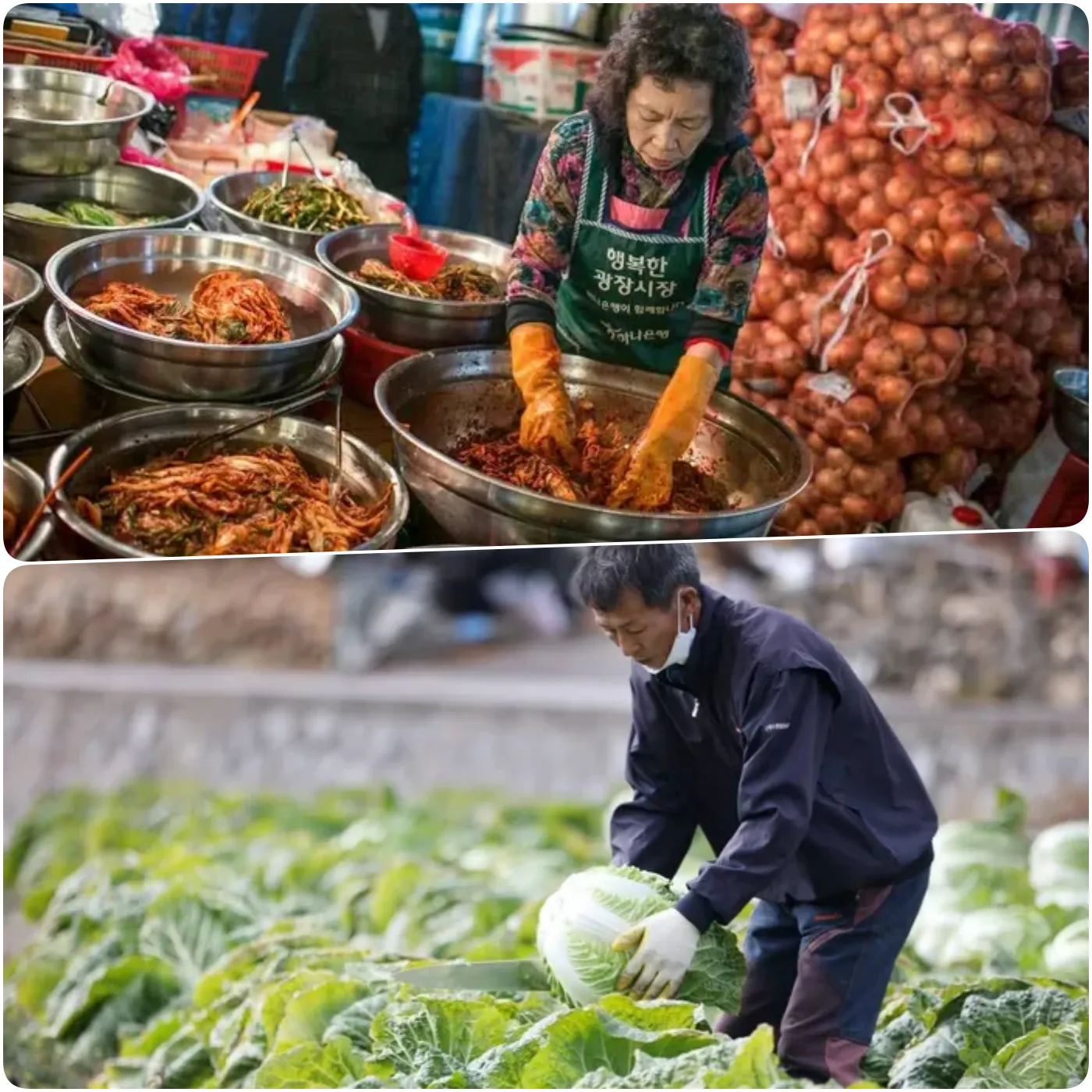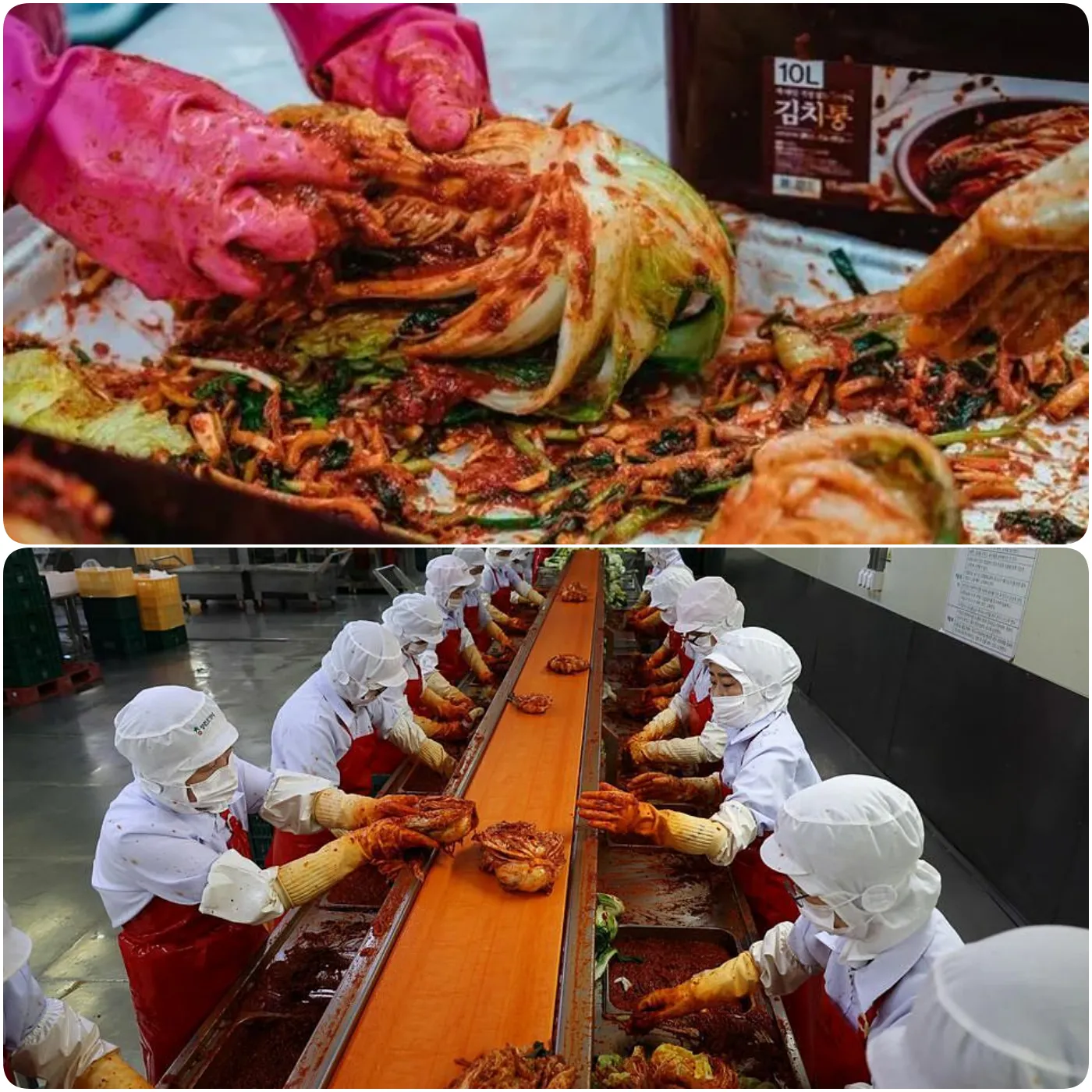
Kimchi crisis in Korea: Climate change threatens the national staple
South Korea’s beloved kimchi, especially napa cabbage kimchi, is facing a dire future as climate change poses a serious threat to kimchi production. The Korea Rural Development Administration said the country may no longer be able to grow and produce napa cabbage kimchi by 2090 due to rising temperatures. Scientists, farmers and kimchi producers have observed a decline in both the quality and quantity of napa cabbage, the main ingredient in this iconic dish.
Napa cabbage kimchi is on the verge of extinction?
Napa cabbage thrives in cool climates, often grown in high mountains where summer temperatures rarely exceed 25°C. “We hope climate predictions in Korea will never come true,” said Lee Young-gyu, a plant researcher. “Napa cabbage grows best in cool conditions, ideally between 18 and 21°C.”

From farm to table, from market to home kitchen, changes in kimchi are becoming increasingly apparent to farmers, producers and everyday Koreans. While other vegetables such as radishes, cucumbers, and green onions are also used to make kimchi, napa cabbage kimchi remains the most traditional and popular type of kimchi.
Describing the effects of high temperatures on this vegetable, Ms. Lee Ha-yeon, a kimchi artist, said that hot weather can cause the core of the cabbage to “be damaged, while the roots become mushy.” Ms. Lee Ha-yeon was awarded the title “Kimchi Master” by the Korean Ministry of Agriculture for her contributions to national cuisine and culture.
Climate change forecasts from the Korean Rural Development Administration predict that the area of land suitable for growing napa cabbage in Korea will decrease to only 44 hectares within the next 25 years. By 2090, the “Land of Kimchi” may no longer have suitable land to grow the main ingredient for its most famous dish.
Studies show that rising temperatures, unpredictable rainfall and increasing pest infestations are making growing crops more difficult. Longer, warmer summers lead to poor harvests, and mold from unusual temperatures causes cabbage to wilt, especially near harvest time.
Competition and crisis
Climate change is adding to the burden faced by the Korean kimchi industry, which is already struggling against competition from cheaper Chinese kimchi at restaurants and eateries. Customs data shows that in 2024, the volume of imported kimchi in Korea increased by 6.9%, reaching a record level of 98.5 million USD. Most of this imported kimchi originates from China.
In response, the South Korean government tapped into climate-resilient food reserves to prevent sudden price increases and napa cabbage kimchi shortages. Meanwhile, scientists are racing to develop cabbage varieties that can thrive in warmer climates and withstand unpredictable weather and diseases.
The people who are most worried right now are the cabbage farmers. Farmers like Kim Si-gap, who has spent most of his life growing cabbage in Gangneung, Gangwon Province, worry that these new varieties could be more expensive and lack the authentic flavor needed for traditional kimchi.

“I am both sad and shocked to know that Korea may not be able to grow napa cabbage in the future,” the 71-year-old farmer said. “Kimchi is an essential part of the Korean meal. What would we do if this really happened?”
In early August, South Korea’s Ministry of the Interior issued the highest temperature warning nationwide after temperatures soared from 30°C to 36°C for several consecutive days. This warning was lifted on September 7, marking the end of an unusually hot summer. Although official reports are still pending, August 2024 is predicted to be the hottest month in South Korea’s history, with the national average temperature reaching a record 28°C.
As the country grapples with these climate challenges, the future of kimchi—a cornerstone of Korean culture and cuisine—is at stake.






